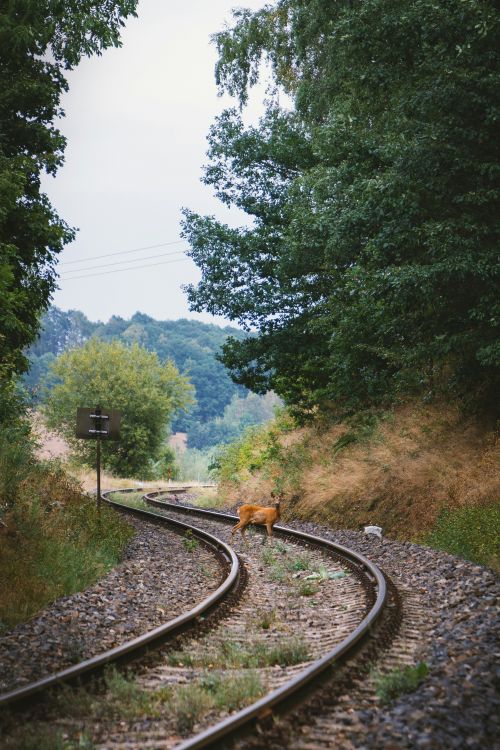Introduction
Documentation
Syntax
Autoexport from the XML-Schema for element IS:detector of railML ® version 3.3 |
| Documentation
|
natural hazard detection
|
| Subschema
|
infrastructure
|
| Parents*
|
detectors
|
| Children
|
areaLocation (0..*), designator (0..*), elementState (0..*), gmlLocation (0..*), isValid (0..*), linearLocation (0..*), linkedWith (0..*), name (0..*), networkLocation (0..*), spotLocation (0..*), typeDesignator (0..*)
|
Attributes:
- detects: type of hazard that is detected by the detector (optional;
xs:string; patterns: other:w{2,}; consider Dev:UsingAny too.)
- Possible values:
- avalanche: Detector is used to detect avalanches
- camels: Detector is used to detect camels on the track
- derailment: Detector is used to detect if a train has been derailed.
- flatWheel: Detector is used to detect flat wheels
- hotWheelBox: Detector is used to detect hot wheel boxes
- pantographContactPressureAnomaly: detects if the overhead contact line pressure is too low or too high when trains passes
- pantographContactStripWear: detects a faulty or worn contact strip on a pantograph
- reindeer: Detector is used to detect reindeer on the track
- rocks: Detector is used to detect rocks on the track
- sand: Detector is used to detect sand on the track,
- id: the identifier of the object; this can be either of type xs:ID or UUID (obligatory;
xs:ID); compare: Dev:Identities
|
*Notice:
Elements may have different parent elements. As a consequence they may be used in different contexts.
Please, consider this as well as a user of this wiki as when developing this documentation further.
Aspects that are only relevant with respect to one of several parents should be explained exclusively in the documentation of the respective parent element.
|
Autoexport from the XML-Schema for element IS:detector of railML ® version 3.2 |
| Documentation
|
natural hazard detection
|
| Subschema
|
infrastructure
|
| Parents*
|
detectors
|
| Children
|
areaLocation (0..*), designator (0..*), external (0..*), gmlLocations (0..*), isValid (0..*), linearLocation (0..*), linkedWith (0..*), name (0..*), networkLocation (0..*), spotLocation (0..*), typeDesignator (0..*)
|
Attributes:
- detects: type of hazard that is detected by the detector (optional;
xs:string; patterns: other:w{2,}; consider Dev:UsingAny too.)
- Possible values:
- avalanche
- camels
- reindeer
- rocks
- sand,
- id: the identifier of the object; this can be either of type xs:ID or UUID (obligatory;
xs:string; patterns: (urn:uuid:)?[0-9a-fA-F]{8}-[0-9a-fA-F]{4}-[0-9a-fA-F]{4}-[0-9a-fA-F]{4}-[0-9a-fA-F]{12}|{[0-9a-fA-F]{8}-[0-9a-fA-F]{4}-[0-9a-fA-F]{4}-[0-9a-fA-F]{4}-[0-9a-fA-F]{12}}); compare: Dev:Identities
|
*Notice:
Elements may have different parent elements. As a consequence they may be used in different contexts.
Please, consider this as well as a user of this wiki as when developing this documentation further.
Aspects that are only relevant with respect to one of several parents should be explained exclusively in the documentation of the respective parent element.
|
This element does not appear in railML® 3.1 within the IS subschema. It is available only in railML® 3.2. Do not hesitate to contact railML.org for further questions.
Changes 3.1→3.2
There exists an overview of all changes between railML® 3.1 and railML® 3.2 on page Dev:Changes/3.2.
Introduced with version 3.2.
Changes 3.2→3.3
There exists an overview of all changes between railML® 3.2 and railML® 3.3 on page Dev:Changes/3.3.
The parents have been changed.
The children have been changed.
The attributes have been changed.
Semantics
Best Practice / Examples
Additional Information
Notes
Open Issues
